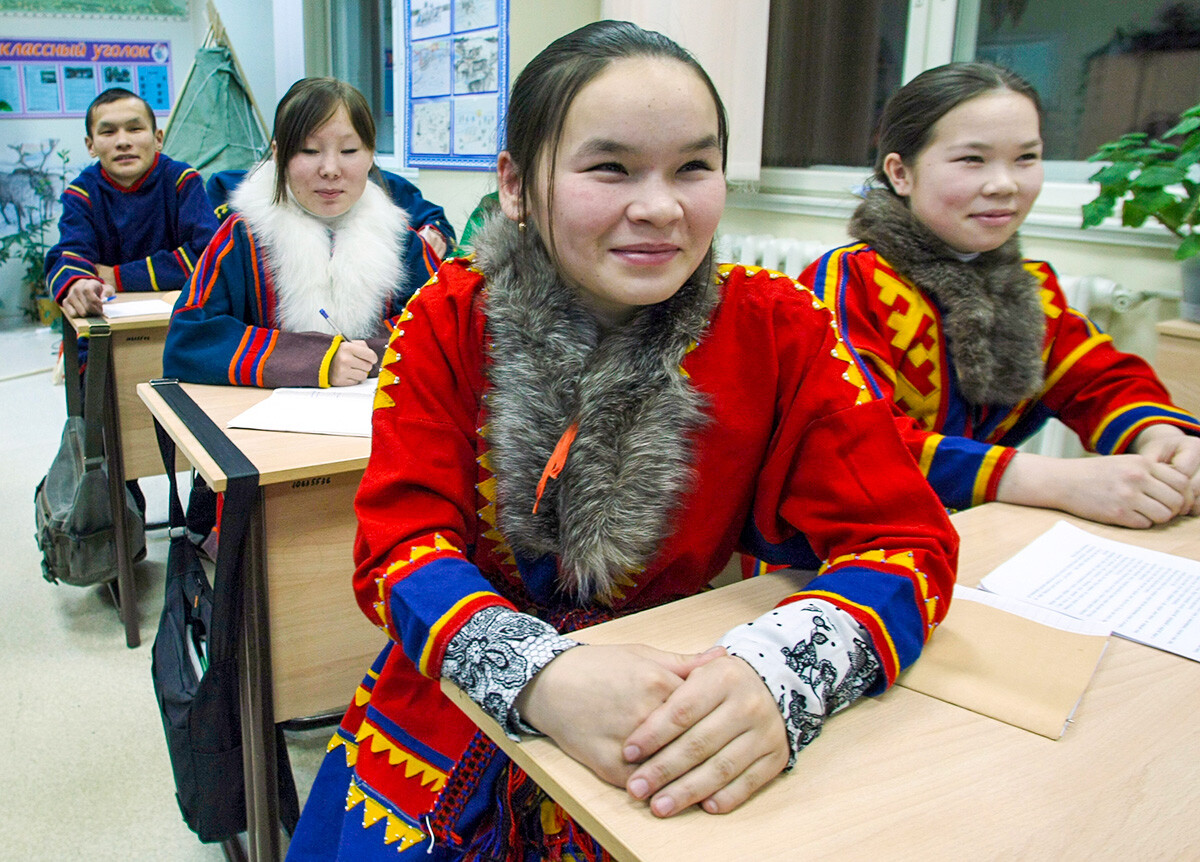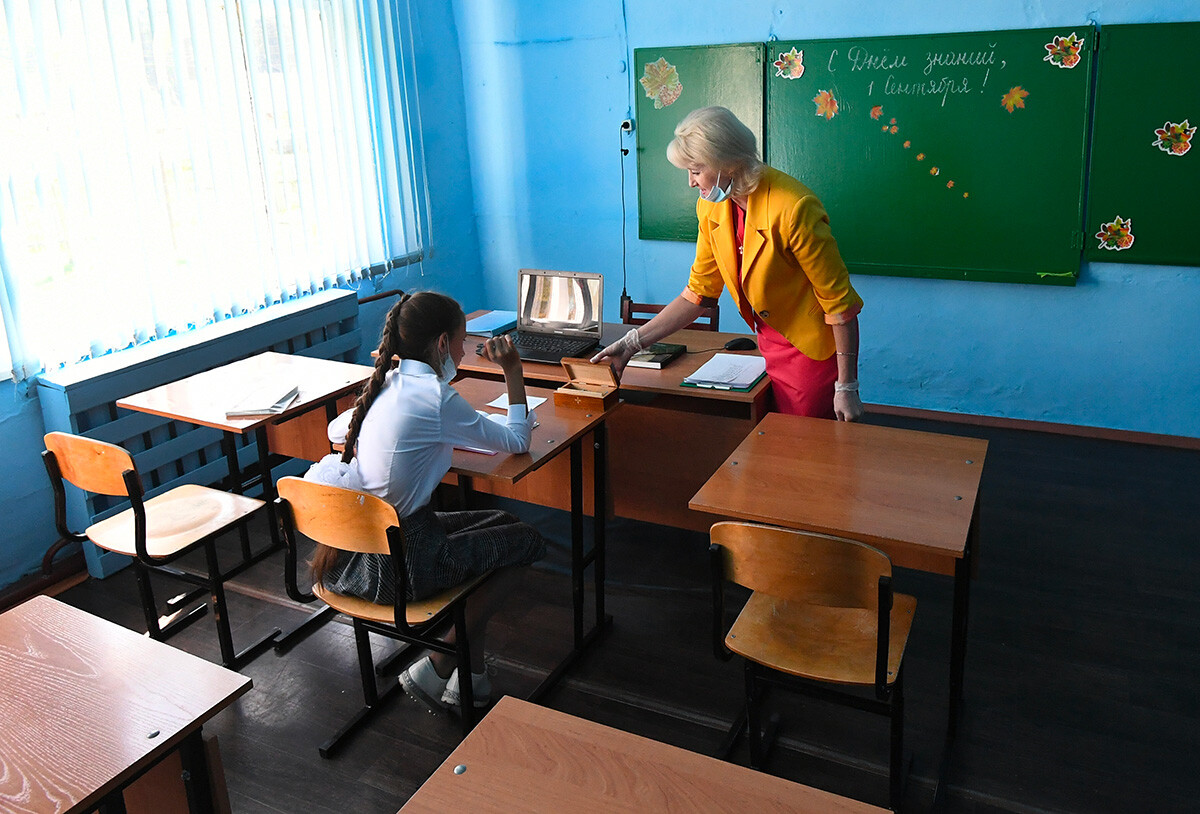How kids go back to school in faraway places of Russia (PHOTOS)

Scholastic helicopters
 A helicopter is picking up kids for school.
A helicopter is picking up kids for school.
Russia’s Arctic zone is a vast area with few roads and plenty of tundra. Northern nomadic peoples breed reindeer, moving from place to place with their families. Now, there are more than 20,000 nomads in the country and they live all over the Arctic. They are Nenets, Dolgans, Evens and other ethnic peoples. And what about the children, you wonder?
 Next time this girl will see the parents' chum only in winter holidays.
Next time this girl will see the parents' chum only in winter holidays.
In Russia, all children are obliged to go to school and nomad children are no exception. In the early Soviet years, about a century ago, there were two systems of education developed for them. The first, the most common, was boarding schools, when they returned to their parents and homes only in the summer and winter vacations.
 At the boarding school in Yamal.
At the boarding school in Yamal.
To pick up the students, regional authorities organize special “school helicopters”. At the end of August, the helicopter flies over the tundra in search of reindeer herders’ children, picks them up and takes them to school.
 A Nenets student at the class.
A Nenets student at the class.
Boarding schools are located in nearby villages or towns and do not differ from other Russian schools, except that children here not only learn, but also reside.
 At the boarding school in Yamal.
At the boarding school in Yamal.
If the family has an apartment or relatives in the settlement, they can live there and not in the dormitory. Sometimes, only the men stay in the tundra, while the women go to the settlement with kids.
Wandering schools
 A Merlenke wandering school in Yakutia.
A Merlenke wandering school in Yakutia.
In some Russian areas, there is another educational concept in the tundra - nomadic schools. It means that the school “moves around” together with the reindeer herding group. In this case, the kids stay with their families longer and do not drastically change their living environment. In addition to mathematics, physics and the Russian language, pupils learn traditional crafts, the wisdom of reindeer herding and the local language right in the tundra. These schools are classified as branches of rural schools and are established at the official request of nomadic brigades or communities. For little kids, nomadic kindergartens can also be organized.
 A Yakutian student during the math class.
A Yakutian student during the math class.
Today, there are only some 40 nomadic schools in Russia, where roughly 500 children study: in Taimyr, Yamal, Yakutia and other areas. If a student plans to continue their education, they usually go to high school in a boarding school, as the education there is better. Sometimes, a mixed full-time and part-time form of education is offered. In recent years, a distance form of education has appeared.
 Yes, this is also a part of the educational program.
Yes, this is also a part of the educational program.
Modern nomadic schools, meanwhile, look like mobile units with desks, blackboards and technical rooms inside. There are also small schools in the form of traditional chums. All this can be easily disassembled and transported to the next place on sleds and reindeer.
Schools in the taiga
 Neydord village, Omsk Region.
Neydord village, Omsk Region.
City dwellers often dream about living in the taiga, but it only sounds romantic. There are many villages in Siberia where there are no schools, simply because few people reside there. But, children still must study and, sometimes, the road to school is a whole quest.
 Gulnara and his son.
Gulnara and his son.
Gulnara Koldasheva from the village of Sibilyakovo in Omsk Region ferries her son Aidar by boat across the Irtysh River to the village of Kurmanovo, where the school bus will take him to the secondary school in the village of Butakovo, returning the same way.
 Aidar is waiting for a school bus.
Aidar is waiting for a school bus.
The village of Bolshaya Rechka in the foothills of the Sayan Mountains is the last settlement in the area, where the road ends and the impassable taiga begins. The smallest school in Krasnoyarsk Krai with only 15 students is located there!
 These are ALL students of this school.
These are ALL students of this school.
In many classes there are just one or two kids.
 This is how a whole class looks like.
This is how a whole class looks like.
In remote areas of Siberia and the Urals, where there are roads, school buses and GAZ minivans take children to school.
 Knowledge Day (September 1) in the village of Staraya Surtaika in Altai Krai.
Knowledge Day (September 1) in the village of Staraya Surtaika in Altai Krai.
Schoolkids sometimes get there by bicycle or on foot (if it’s warm enough).
 Kirilino village, Omsk region.
Kirilino village, Omsk region.
Are your kids happy with how they get to school? If not, read them some of the above stories!


